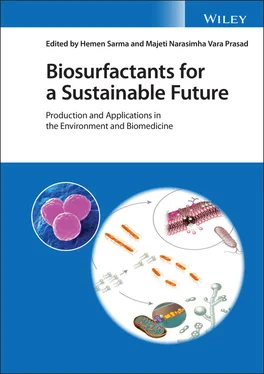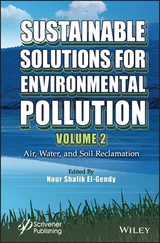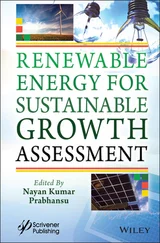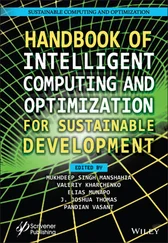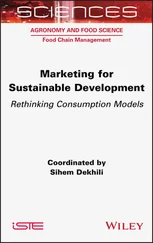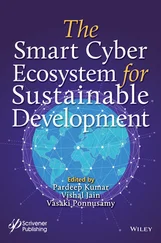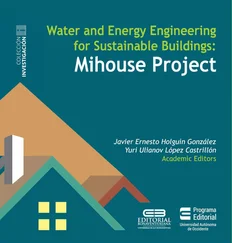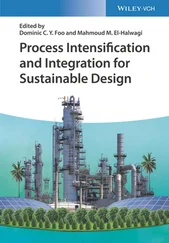1 Cover
2 Title Page
3 Copyright Page
4 List of Contributors
5 Preface
6 1 Introduction to Biosurfactants 1.1 Introduction and Historical Perspective 1.2 Micelle Formation 1.3 Average Aggregation Numbers 1.4 Packing Properties of Amphiphiles 1.5 Biosurfactants 1.6 Sophorolipids 1.7 Surfactin 1.8 Final Comments Acknowledgement References
7 2 Metagenomics Approach for Selection of Biosurfactant Producing Bacteria from Oil Contaminated Soil 2.1 Introduction 2.2 Metagenomics Application: A State‐of‐the‐Art Technique 2.3 Hydrocarbon‐Degrading Bacteria and Genes 2.4 Metagenomic Approaches in the Selection of Biosurfactant‐Producing Microbes 2.5 Metagenomics with Stable Isotope Probe (SIP) Techniques 2.6 Screening Methods to Identify Features of Biosurfactants 2.7 Functional Metagenomics: Challenge and Opportunities 2.8 Conclusion Acknowledgements References
8 3 Biosurfactant Production Using Bioreactors from Industrial Byproducts 3.1 Introduction 3.2 Significance of the Production of Biosurfactants from Industrial Products 3.3 Factors Affect Biosurfactant Production in Bioreactor 3.4 Microorganisms 3.5 Bacterial Growth Conditions 3.6 Substrate for Biosurfactant Production 3.7 Conclusions Acknowledgement References
9 4 Biosurfactants for Heavy Metal Remediation and Bioeconomics 4.1 Introduction 4.2 Concept of Surfactant and Biosurfactant for Heavy Metal Remediation 4.3 Mechanisms of Biosurfactant–Metal Interactions 4.4 Substrates Used for Biosurfactant Production 4.5 Classification of Biosurfactants 4.6 Types of Biosurfactants 4.7 Factors Influencing Biosurfactants Production 4.8 Strategies for Commercial Biosurfactant Production 4.9 Application of Biosurfactant for Heavy Metal Remediation 4.10 Bioeconomics of Metal Remediation Using Biosurfactants 4.11 Conclusion References
10 5 Application of Biosurfactants for Microbial Enhanced Oil Recovery (MEOR) 5.1 Energy Demand and Fossil Fuels 5.2 Microbial Enhanced Oil Recovery (MEOR) 5.3 Mechanisms of Surfactant Flooding 5.4 Biosurfactants: An Alternative to Chemical Surfactants to Increase Oil Recovery 5.5 Biosurfactant MEOR: Laboratory Studies 5.6 Field Assays 5.7 Current State of Knowledge, Technological Advances, and Future Perspectives Acknowledgements References
11 6 Biosurfactant Enhanced Sustainable Remediation of Petroleum Contaminated Soil 6.1 Introduction 6.2 Microbial‐Assisted Bioremediation of Petroleum Contaminated Soil 6.3 Hydrocarbon Degradation and Biosurfactants 6.4 Soil Washing Using Biosurfactants 6.5 Combination Strategies for Efficient Bioremediation 6.6 Biosurfactant Mediated Field Trials 6.7 Limitations, Strategies, and Considerations of Biosurfactant‐Mediated Petroleum Hydrocarbon Degradation 6.8 Conclusion References
12 7 Microbial Surfactants are Next‐Generation Biomolecules for Sustainable Remediation of Polyaromatic Hydrocarbons 7.1 Introduction 7.2 Biosurfactant‐Enhanced Bioremediation of PAHs 7.3 Microorganism's Adaptations to Enhance Bioavailability 7.4 Influences of Micellization on Hydrocarbons Access 7.5 Accession of PAHs in Soil Texture 7.6 The Negative Impact of Surfactant on PAH Degradations 7.7 Conclusion and Future Directions References
13 8 Biosurfactants for Enhanced Bioavailability of Micronutrients in Soil 8.1 Introduction 8.2 Micronutrient Deficiency in Soil 8.3 Factors Affecting the Bioavailability of Micronutrients 8.4 Effect of Micronutrient Deficiency on the Biota 8.5 The Role of Surfactants in the Facilitation of Micronutrient Biosorption 8.6 Surfactants 8.7 Conclusion References
14 9 Biosurfactants 9.1 Nanoparticles 9.2 Synthesis of Nanoparticles 9.3 Biosurfactants 9.4 Biosurfactant Mediated Nanoparticles Synthesis 9.5 Challenges in Environmental Applications of Nanoparticles and Future Perspectives Acknowledgements References
15 10 Green Surfactants 10.1 Environmental Pollution and World Health 10.2 Amino Acid‐Derived Surfactants 10.3 Biosurfactants 10.4 Antimicrobial Resistance 10.5 Catanionic Vesicles 10.6 Biosurfactant Functionalization: A Strategy to Develop Active Antimicrobial Compounds 10.7 Conclusions References
16 11 Antiviral, Antimicrobial, and Antibiofilm Properties of Biosurfactants 11.1 Introduction 11.2 Antimicrobial Properties 11.3 Biofilms 11.4 Antiviral Properties 11.5 Therapeutic and Pharmaceutical Applications of Biosurfactants 11.6 Biosurfactants in the Food Industry: Quality of the Food 11.7 Conclusions Acknowledgements References
17 12 Biosurfactant‐Based Antibiofilm Nano Materials 12.1 Introduction 12.2 Emerging Biofilm Infections 12.3 Challenges and Recent Advancement in Antibiofilm Agent Development 12.4 Impact of Extracellular Matrix and Their Virulence Attributes 12.5 Role of Indwelling Devices in Emerging Drug Resistance 12.6 Role of Physiological Factors (Growth Rate, Biofilm Age, Starvation) 12.7 Impact of Efflux Pump in Antibiotic Resistance Development 12.8 Nanotechnology‐Based Approaches to Combat Biofilm 12.9 Biosurfactants: A Promising Candidate to Synthesize Nanomedicines 12.10 Synthesis of Nanomaterials 12.11 Self‐Nanoemulsifying Drug Delivery Systems (SNEDDs) 12.12 Biosurfactant‐Based Antibiofilm Nanomaterials 12.13 Conclusions and Future Prospects Acknowledgement References
18 13 Biosurfactants from Bacteria and Fungi 13.1 Introduction 13.2 Biomedical Applications of Biosurfactants: Recent Developments 13.3 Conclusion Acknowledgements References
19 14 Biosurfactant‐Inspired Control of Methicillin‐Resistant Staphylococcus aureus (MRSA) 14.1 Staphylococcus aureus, MRSA, and Multidrug Resistance 14.2 Biosurfactant Types Commonly Utilized Against S. aureus and Other Pathogens 14.3 Properties of Efficient Biosurfactants Against MRSA and Bacterial Pathogens 14.4 Uses for Biosurfactants 14.5 Biosurfactants Illustrating Antiadhesive Properties against MRSA Biofilms 14.6 Biosurfactants with Antibiofilm and Antimicrobial Properties 14.7 Media, Microbial Source, and Culture Conditions for Antibiofilm and Antimicrobial Properties 14.8 Novel Synergistic Antimicrobial and Antibiofilm Strategies Against MRSA and S. aureus 14.9 Novel Potential Mechanisms of Antimicrobial and Antibiofilm Properties 14.10 Conclusion References
20 15 Exploiting the Significance of Biosurfactant for the Treatment of Multidrug‐Resistant Pathogenic Infections 15.1 Introduction 15.2 Microbial Pathogenesis and Biosurfactants 15.3 Bio‐Removal of Antibiotics Using Probiotics and Biosurfactants Bacteria 15.4 Antiproliferative, Antioxidant, and Antibiofilm Potential of Biosurfactant 15.5 Wound Healing Potential of Biosurfactants 15.6 Conclusion and Future Prospects References
21 16 Biosurfactants Against Drug‐Resistant Human and Plant Pathogens 16.1 Introduction 16.2 Environmental Impact of Antibiotics 16.3 Pathogenicity of Antibiotic‐Resistant Microbes on Human and Plant Health 16.4 Role of Biosurfactants in Combating Antibiotic Resistance: Challenges and Prospects 16.5 Conclusion Acknowledgements References
22 17 Surfactant‐ and Biosurfactant‐Based Therapeutics 17.1 Introduction 17.2 Determinants and Forms of Surfactants 17.3 Structural Forms of Surfactants 17.4 Drug Delivery Systems 17.5 Different Types of Biosurfactants Used for Drug Delivery 17.6 Conclusions References
23 18 The Potential Use of Biosurfactants in Cosmetics and Dermatological Products 18.1 Introduction 18.2 Properties of Biosurfactants 18.3 Biosurfactant Classifications and Potential Use in Cosmetic Applications 18.4 Dermatological Approach of Biosurfactants 18.5 Cosmetic Formulation with Biosurfactant 18.6 Safety Measurement Taken for Biosurfactant Applications in Dermatology and Cosmetics 18.7 Conclusion and Future Perspective Acknowledgement References
24 19 Cosmeceutical Applications of Biosurfactants 19.1 Introduction 19.2 Cosmeceutical Properties of Biosurfactants 19.3 Other Activities 19.4 Application Prospects 19.5 Biosurfactants in the Market 19.6 Challenges and Conclusion References
Читать дальше
